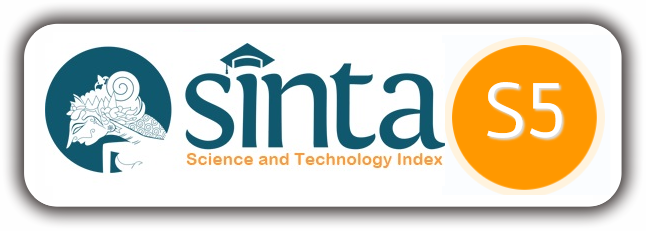STUDY AT HOME: ANALISIS KESULITAN BELAJAR MATEMATIKA PADA PROSES PEMBELAJARAN DARING
Abstract
Abstract
The e-learning study at home education system is in accordance with the 2013 curriculum. However, when the e-learning application is too difficult, it is likely that students are not able to learn mathematics optimally, as well as the amount of data that must be delivered but the internet or network access becomes slow, of course it is will disrupt student activities. This study aims to determine the learning difficulties of students towards mathematics e-learning at home. The research method used is descriptive research method. The study involved high school / MA students with data collection techniques and information through a student questionnaire response instrument using Google forms and the research subjects numbered 30 students. The student response contained 31 statement items which were the descriptions of the indicators. Indicator to measure students 'responses regarding students' learning difficulties to mathematics through the e-learning system at home. Based on the average student achievement regarding learning difficulties in mathematics e-learning that is 75% by having the lowest achievement value by students namely the implementation of interactions, assignments and teaching materials in online learning by 73% and the highest indicator achieved by students namely technical signal constraints and the inability to learn online (e-learning) that is equal to 77% and for testing the validity shows that all items are valid statements, this is because 𝑟𝑐𝑜𝑢𝑛𝑡 > 𝑟𝑡𝑎𝑏𝑒𝑙 and Cronbach Alpha value 0.839> reliability coefficient 0.6. After calculated using SPSS 23.
Keywords: Difficulty learning mathematics, E-learning, studying at home
Full Text:
PDFReferences
Dewi, P.S., & Septa, H.W. (2019). Peningkatan Kemampuan Pemecahan Masalah dan Disposisi Matematis Siswa dengan Pembelajaran Berbasis Masalah. Mathema: Journal Pendidikan Matematika. 1(1), 31-39.
H.M Burhan Bungin. (2011). Metode Penelitian Kuntitatif: Komunikasi, Ekonomi, dan Kebijakan Publik serta Ilmu-ilmu lainnya, Edisi Kedua (2nd ed.). Jakarta: Kencana Prenama Media Group.
Maskar, S. & Anderha, R. R. (2019). Pembelajaran Transformasi Geometri dengan Pendekatan Motif Kain Tapis Lampung.Mathema: Jurnal Pendidikan Metematika. 1(1), 40-47
Puspaningtyas, N. D. (2019). Berpikir Lateral Siswa SD dalam Pembelajaran Matematika. Mathema: Jurnal Pendidikan Matematika. 1(1), 25-30
Putri, L.A., & Dewi, P.S. (2020). Media Pembelajaran Menggunakan Video Atraktif pada Materi Garis Singgung Lingkaran. Mathema Journal Pendidikan Matematika. 2(1), 32-39.
Ramadhani, Mawar. (2012). Efektivitas Penggunaan Media Pembelajaran Elearning Berbasis Web Pada Pembelajaran Teknologi Informasi dan Komunikasi Terhadap Hasil Belajar Siswa Kelas X SMA Negeri 1 Kalasan.Yogyakarta: Tidak Diterbitkan
Rohmah, L., (2016). Konsep E-Learning Dan Aplikasinya Pada Lembaga Pendidikan Islam. An-Nur: Jurnal Studi Islam. 3(2),
Ruseffendi, E.T, 2006, Pengantar Kepada Guru Mengembangkan Kompetensinya dalam Pengajaran Matematika Untuk Meningkatkan CBSAl. Bandung: Tarsito.
Setyosari, punaji. 2012. Metode Penelitian Pengembangan. Jakarta: Kencana. Sugiyono. 2016. Metode Penelitian Kombinasi (8th ed.). Bandung: Alfabeta.
Ulfa, M. (2019). Strategi Preview, Question, Read, Reflect, Recite, Review (PQ4R) pada Pemahaman Konsep Matematika. Mathema Journal Pendidikan Matematika. 1(1), 48-55.
Yazdi, M. 2012. E-Learning Sebagai Media Pembelajaran Interaktif Berbasis Teknologi Informasi. Jurnal Ilmiah Foristek. 2(1).
DOI: https://doi.org/10.33365/ji-mr.v1i1.252
Refbacks
- There are currently no refbacks.

This work is licensed under a Creative Commons Attribution-ShareAlike 4.0 International License.
JI-MR is licensed under a Creative Commons Attribution-ShareAlike 4.0 International License.
Mathematics Education Department, Faculty of Arts and Education.
Universitas Teknokrat Indonesia
All rights reserved.







